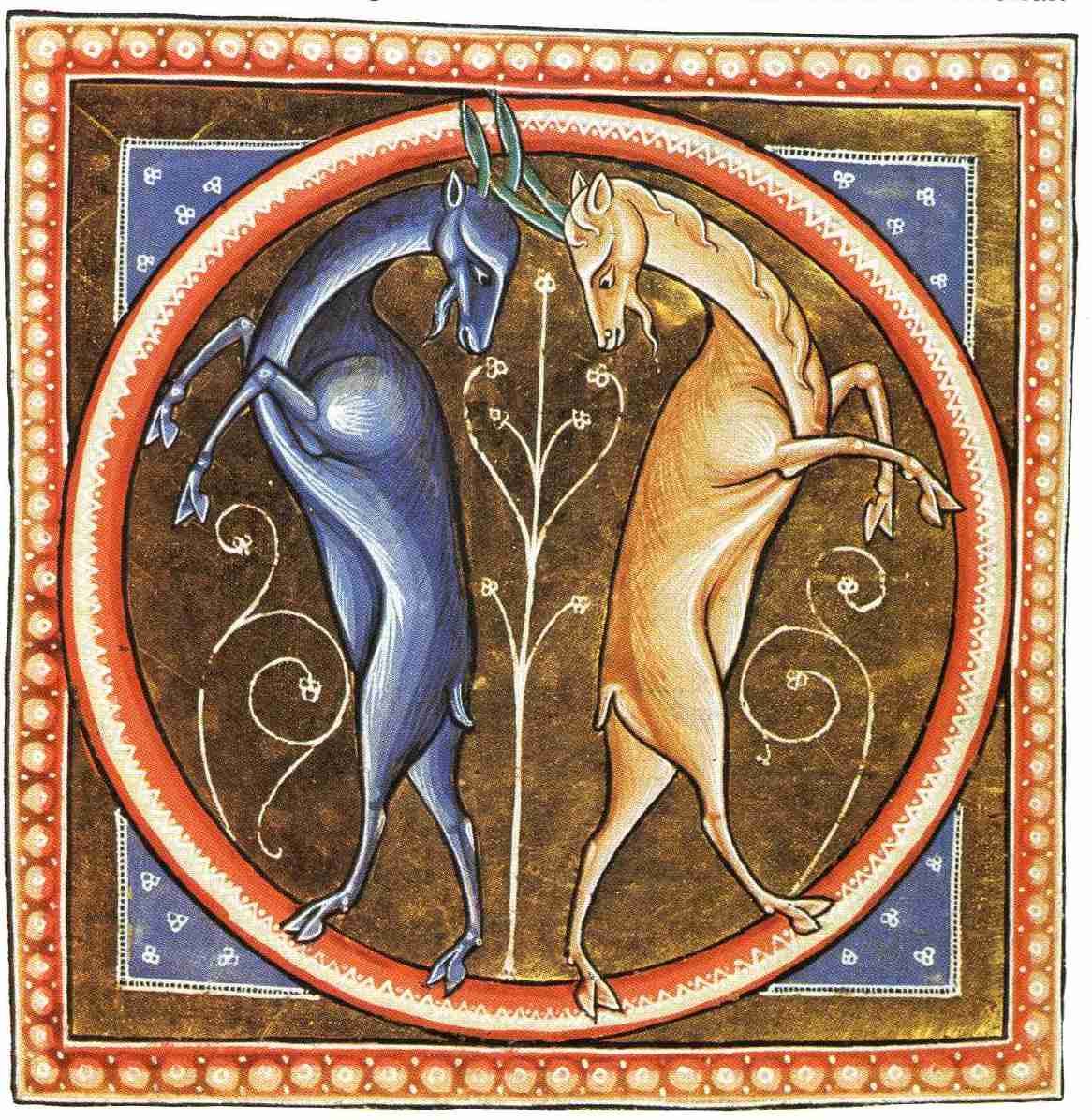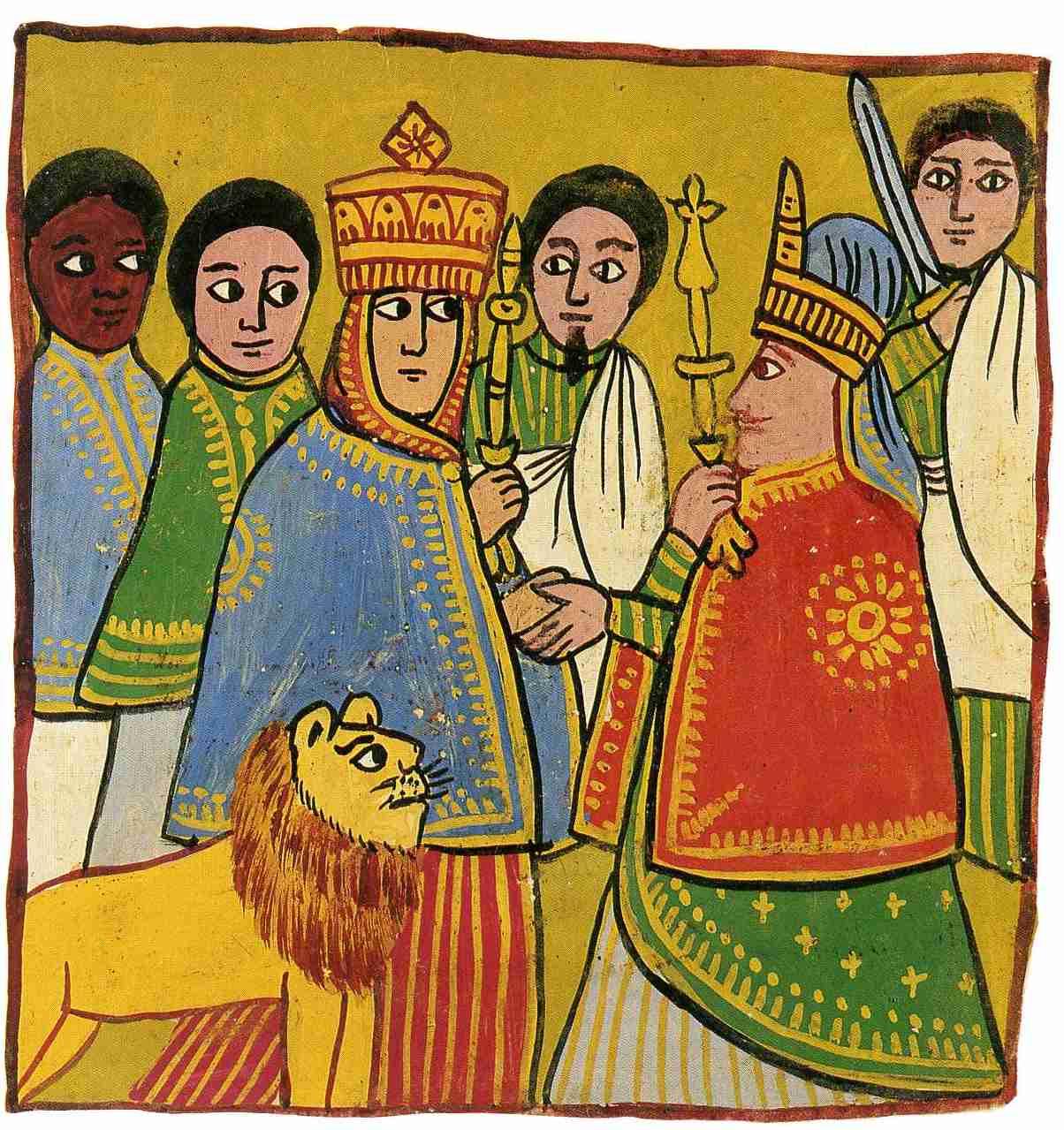"What is a Facsimile? The History and Technique of the Facsimile"
by Manfred Kramer
(from Imagination,
Almanach 1986-1993, Sammelheft. Copyright 1993; 2006)
Today when one speaks of the Austrian book, of its special place and contribution to the history of the book, one cannot ignore its connection with an exceptional and modern book genre, the facsimile; here, interest, enthusiasm and fascination with the old book is united with fine printing and hand craftsmanship. This most modern invention is at the service of our ancient spiritual legacy, whose careful preservation has been deemed important and necessary throughout the centuries.
The basis of this development may be due to the abundance of ancient books housed not only in the great libraries of this country, but often in the architectonically fascinating libraries of many of its monasteries and foundations. With the Austrian National Library, the former Royal Court Library, or the collections in Melk, Göttweig, Kremsmünster, Klosterneuberg, Vorau, Admont or Zwettl—to mention a few—Austria is a true treasure house of the book, where its preservation and protection has constantly been a concern.
The first facsimile in the history of the book was a manuscript of Austrian provenance—the Goldene Bulle—reproduced in 1697 by the Frankfurt law historian Heinrich Günther Thülemeyer and Johann Friedrich Fleischer; based on King Wenceslaus' deluxe presentation manuscript, this copper plate reproduction reflects the means and possibilites available to the printer in the 17th century.
Although we can speak of this 1697 reproduction as possibly the first facsimile edition in the history of the book, in relation to our modern understanding of this genre, there were already elements and ideas of the facsimile in the history of Western printing. The desire to reproduce an accurate copy can be traced back further. From the very beginning of printing both the texts and images of the manuscript were emulated in the printed version. The manuscript exemplars were imitated and sympathized. This was true not only for decorations and illuminations but also for type styles. Especially striking examples are the block books (Blockbücher) which were printed entirely from wood blocks. Ligatures and abbreviations were used equally in print and codices. The fact that the unique manuscripts of scriptoriums and illuminators could find, through printing, unbelievable dissemination, was a sensational feat. In this regard it is amazing that manuscripts were distinctive even though their structure and form were restricted by typological content.
Naturally in the foreground here was not the phenomenon of the magnificent uniqueness of the exemplar, as in today's concept, but the desire to disseminate a self-contained body of knowledge.
A turning point occurred in the 17th century. The preservation of special codices was the first concern for reproduction. Around 1642 there was an attempt to reproduce the miniatures of the "Vergilius Vaticanus (Vat. lat. 3225)" through copper engravings. The Vergil manuscripts from late antiquity appear to be generally the earliest to have stimulated interest as facsimile candidates. So we possess an important piece of text from the Aeneis, thanks to the efforts to have a true reproduction of a single leave of "Vergilius Augusteus" (now lost) in Mabillon's De re diplomatica, which allows us to correctly order the fragment of the manuscript—presently in Berlin and the Vatican—as a component in the reconstruction of the original manuscript. Other early trials to make facsimiles of parts of a manuscript include the miniatures from the "Leges Palatinae" of James III of Mallorca in 1701 in the monumental work of Acta sanctorum.
The decisive advancement in the history of the book type we are addressing here occurred finally in the 19th century with the development of a new printing technique that took advantage of photographic methods to serve the antique book. The development of lithography as a printing process by the Prague printer Senefelder and the subsequent evolution of the printing process known as Lichtdruck (collotype) as the oldest of all facsimile techniques made it suddenly possible to introduce, in printing, photographic halftones (grey tones). The possibility of making facsimiles in the modern sense was born. Hand-made copies no longer would suffice to reproduce a page of a manuscript, but rather the direct application of an uncorrupted photographic image became the basis of the work of the printer. Without these older reproduction methods the most commonly used lithographic process for making facsimiles today, the "offset" process, would be unthinkable.
|
| Kluge Tiere: The copyist of the "Bestiarum" imbued the stags with so much wisdom that, when injured, they ate the correct herbs to heal themselves. Modern behavioral researchers confirm that wild animals experiencing certain hardships indeed search out and feed on healing grasses or herbs. | |  |
|
As a result of these developments during the second half of the 19th century Austria was not only the custodian of irretrievable sources, but a printing stronghold. The firms "Erste Österr. Lichtanstalt", the "Österr. Staatsdruckerei" and the "Kunstanstalt Max Jaffe" stood in the top rank regarding the preservation and protection of unique book treasures and earned rapid international reputation for their high quality and manuscript credentials. Austrian facsimile publishing experienced a true flourishing during the period between the two world wars, especially in respect to the latter two firms. Editions such as the "Wiener Genesis", the "Wiener Dioskurides" or the "Buch vom liebentbrannten Herzen" of René d'Anjou were printed in perfect form.
In the period after the second world war this tradition was seized in Graz by Akademische Druck- und Verlagsanstalt Dr. Paul Struzl (ADEVA), which, at the same time, steered the genre in a fully new direction with the introduction of the "offset press" lithography process, which became the dominant method in the "facsimilization" of historical monuments. In the last thirty years Austria has become the country—thanks to the role of ADEVA—where the highest number of facsimile editions have appeared. This was possible not only through technical advancements but through a new publishing concept: from the very beginning and with each work the question of protecting the original from constant use was addressed. This meant that for the first time the essential qualities of a manuscript—or what those qualities seemed to be at that moment—should be "documented" (made into a facsimile), and completeness in the reproduction would be strived for. No detail of the original would be neglected, no empty pages omitted out of economic considerations, no library stamps removed, even if these details seemed to appear unimportant to the documentation. With the series "Codices Selecti" a form of scientific documentation was developed which became a model for all other facsimile publishers.
A further objective of the documentation of manuscripts was to go beyond national borders and to draw on the most important manuscripts and unique documents from all cultural circles. With "Codices Selecti" the book patrimony of the whole humankind would be documented, its written and illustrated texts should be published in outstanding reproductions, to make them understandable and useful. The concern of preservation is the integral part of this work.
Up to now more that 35 libraries and museums all over the world have contributed to the formation of more than 80 facsimile editions in the series "Codices Selecti." [translator's note: As of Jan. 2006 the series consists of 110 volumes.] In addition to many international libraries and institutions there is a special emphasis on manuscripts from the Austrian National Library, which houses one of the largest collections of manuscripts and incunables in the world. An outstanding facsimile published in 1965-70 is the "Wiener Dioscurides" which for the first time reproduces the original in its entirety.
|
| Africa: According to ancient Ethiopian tradition the old Aksumite dynasty descended from King Solomon and Maheda, the Queen of Sheba. In the Christian epoch Nubia and Egypt were evangelized by the Copts of Egypt, of the legendary Kathedra of St. Mark's in Alexandria. The encounter of King Solomon and Queen Azeba is a popular motif in Ethiopian manuscripts. | |  |
|
|
| |
|
Naturally all this work is only possible and feasible if the term "facsimile" is clearly defined. The concept and definition of the facsimile as ADEVA has realized it for more than 30 years is also a concept that has been adopted by all the other younger publishers of facsimiles in the German-speaking sphere, namely in Austria, Germany and Switzerland—an amazing accomplishment.
This definition of a facsimile as it is construed today and, in general, acknowledged, encompasses the following elements:
A facsimile edition is the photo-mechanical reproduction of a unique, practically two-dimensional model; it eliminates as much as possible manual copy work, reflects to the highest degree the inner and outer aspects of the original, incorporates all possible technical means available, garantees the protection and preservation of the original, and is suitable for both scientific and artistic interests. A facsimile must act as a true surrogate of the original for research purposes and bibliophiles.
Thus, the essential criteria are: a facsimile is a reproduction of a unique source. In contrast to a reprint, a facsimile is also always a first edition of a manuscript. It should never reproduce only a portion of the manuscript or its decoration. Completeness is as indispensable as the original format is. Accuracy to the original color tones, as much as modern techniques allow, is obvious but the thoughtful publisher and printer will make an attempt to maintain other aspects as well, such as the fascicle layout of the manuscript and points that can be decisive for a detailed study and can serve as scientific proofs. It must be possible for a scholar to work from the facsimile without using the original, thus saving it from further hardships. The type of printing process is not included among these criteria, as it is possible today to produce a facsimile using a variety of printing techniques and methods.
If the offset printing process in its more refined form firmly established itself as the facsimile process, it is not only thanks to the pioneering work that ADEVA has performed over the last 30 years, but also because the technical possibilities of modern reproduction process could be employed in the most economical way. The facsimile edition of a manuscript becomes then only meaningful if it is accessible to the researcher, and that means acquirable as well.
The facsimile has captured a firm place in modern book publishing and the contents of the old book in its formal presence become interesting again through its new appearance. At any time now a collection can be assembled, which in its fullness and contents far surpasses the imagination of the greatest bibliophiles of the past.
We live in a society where we seek access to stored knowledge and the ability to transmit both our experiences and those of our forebearers to future generations. (translated by Eric Canepa)